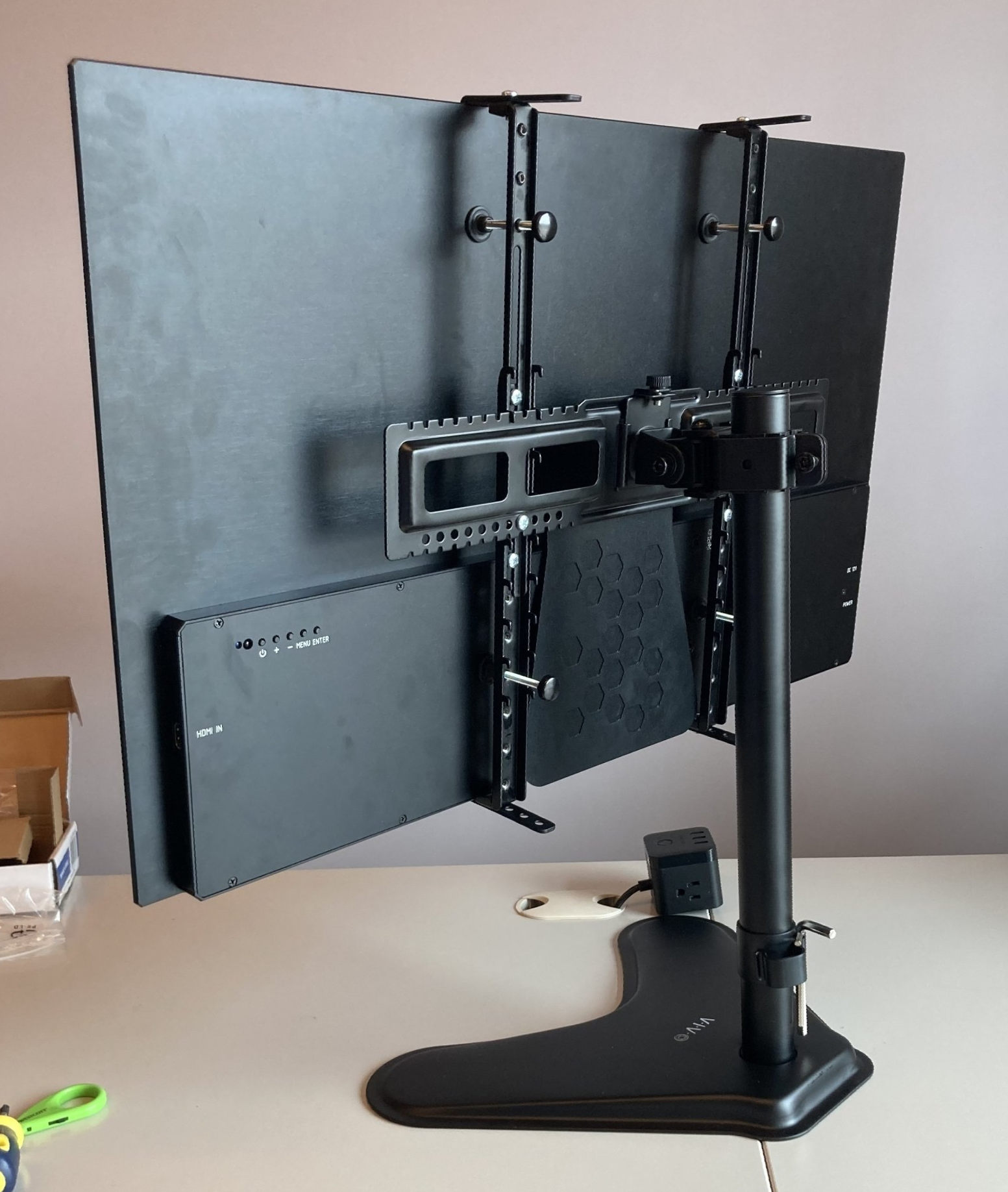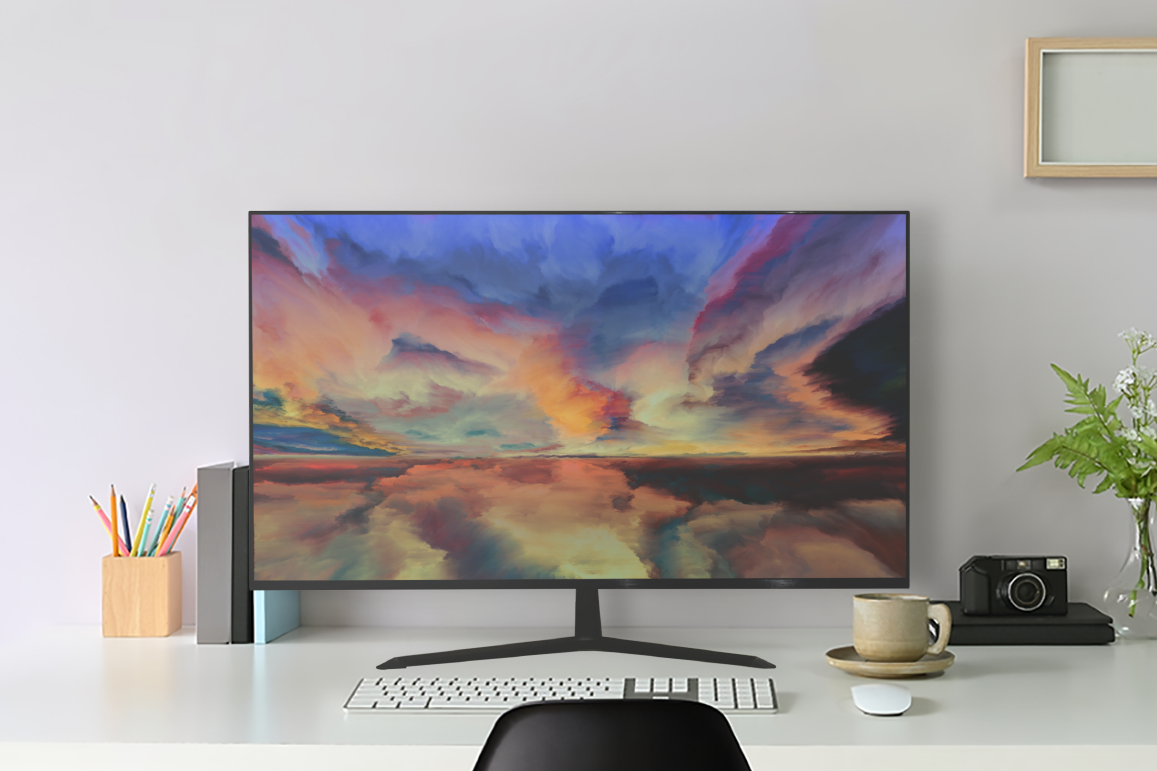Challenges of Achieving Color Accuracy with Commercial Digital Signage
What color are the strawberries in this picture?
There are two common answers: Some say the strawberries are red, while others think they are grey. How can people look at the same image but see two completely different colors?
Variances in human eye structure – as well as many other factors – can help explain this phenomenon. These factors pose a significant challenge for the advertising industry where color accuracy is critical.
In this article we’ll discuss these challenges and how they affect different types of commercial signage.
2色法によるイチゴの錯視。この画像はすべてシアン色(青緑色)の画素でできているが、イチゴは赤く見える。
— Akiyoshi Kitaoka (@AkiyoshiKitaoka) February 28, 2017
Strawberries appear to be reddish, though the pixels are not. pic.twitter.com/Ginyhf61F7
What is color accuracy?
Color Accuracy is one of the many terms we use to describe image quality. It refers to how well colors can be reproduced as intended. Color accuracy is especially important for commercial advertising. Most companies have specific colors that are part of their unique brand identity. Some examples include Coca-Cola red[1], Wal-Mart blue, and Amazon orange. For a Coca-Cola advertisement to best represent the Coca-Cola brand, it must use an exact shade of red. If the red is any more or less saturated, the advertisement loses its color accuracy.
Biological factors affecting color accuracy:
Human Eye Structure
One of the primary factors affecting color accuracy is the structure of our eyes. Within our retinas are three types of photoreceptor cells, called “cones” [2]. Our cones come in three sizes, each size receptive to a specific range of color within the visible spectrum: S cones help us see blue, M cones help us see green, and L cones help us see red. People can be born with fewer, smaller, or defective cones, which affects the way they see certain colors. For example, those who have smaller, defective, or fewer S cones will not be able to see blue as well as those who have more normal S cones[3]. Age plays a role in color accuracy, too. As we age, our eye lens becomes weaker and physically changes the way we see[4]. Human vision can vary quite dramatically depending on the distribution of cones and the age of our eyes. This helps to explain why color can be subjective.
Color Memory
Another factor that affects our color vision, or at least our interpretation of color, is our color memory. If you happen to see red in the above strawberry picture, your color memory is playing tricks on you! Those strawberries do not contain any red pixels, only grey. If you crop a section of the strawberries and look at it separately, you’ll be able to tell there’s no red. But, when we see the picture in its entirety, our memory of strawberries being red makes us perceive that they’re red[5], when, in fact, they’re not.
To maintain color consistency, people developed color standards. The currently established color standards for print and digital media include Pantone, CMYK, and RGB. For video, the color standards are Rec. 709, sRGB, DCI-P3 and Rec. 2020[6]. These standards regulate how much red, green, and blue should be included when reproducing a specific color and are very helpful in terms of reproducing accurate colors for brands’ logos and advertisements.
Now that we understand how some biological factors affect color accuracy, let’s explore how this plays out for commercial signage, both printed and digital.
Challenges of achieving color accuracy with printed commercial signage:
Printed signage is a marketing and advertising tool that’s been used for centuries. When it comes to achieving color accuracy, printed signage presents some unique challenges:
Printable Colors
To print colors accurately, designers must work within a pre-set color space, or range of colors a printer is able to capture or reproduce[7]. CMYK is one of the most popular color spaces used for printing[8], but it does have one disadvantage: CMYK color options are limited to around 16k colors, compared to up to 16.7 million for displays – a factor of 100 times less. So, not all colors are possible to achieve on printed signage[9].
Material Color
Furthermore, printed medium (i.e. paper, vinyl, etc.) itself has color. The material color can change the appearance of the printed color and cause color inaccuracy.
Ink Absorption
Paper and other materials absorb ink during printing. The more absorbent the material, the more difficult it can be to achieve color accuracy as more ink is required to achieve full color saturation. Paper with a glossy coating has low absorption[10], and can be an effective way to achieve color accuracy without using excessive amounts of ink.
A benefit digital signage has over printed signage:
Digital signage has one significant advantage over printed signage when it comes to achieving color accuracy: wider color gamut.
Color gamut is defined by the range of colors in the spectrum that human eyes can identify[11]. Within display technologies, like those used in digital signage, color gamut refers to the total range of colors a display can produce. The wider the color gamut rating of a display, the more colors it can produce for viewers.
LED and LCD displays used in digital signage reproduce colors via an RGB color system. Red (R), green (G), and blue (B) pixels are arranged in rows and columns across the display panel. These pixels can be illuminated in numerous combinations to produce a wide color gamut (i.e. range of colors) – much wider than what’s available for printing in CMYK colors. This is one advantage digital signage has over printed signage.
Types of digital signage technologies:
There are three dominant display technologies used in commercial digital signage today:
Backlit LCD digital signage
Backlit LCD digital signage uses a backlight to illuminate the display. In front of the backlight are other layers which transform the light into dynamic, colorful images (Read “How Do LCDs Work” for more details). The liquid crystal materials, backlighting, and other features can be adjusted to improve the LCD’s image quality.
LED digital signage
LED digital signage operates very differently from LCD digital signage. LED digital signage generates colors through light emitting diodes (LEDs). These LEDs use materials to produce photons of varying wavelengths, which appear as distinct colors[12]. Manufacturers can mix specific colors within a single LED display to broaden the display’s color gamut and achieve an even better level of color accuracy.
Reflective LCD signage
Reflective LCD signage is a relatively new technology for digital signage applications. Reflective LCDs work similarly to other LCDs, except they have a mirror-like/reflective layer installed behind the rear polarizer instead of a backlight. This mirror-like layer illuminates the display using reflected ambient light.
Challenges of achieving color accuracy with commercial digital signage:
Now, let's get to the challenges of achieving color accuracy with commercial digital signage.
Though LED and backlit LCD digital signage can produce a wider color gamut and better color accuracy than printed signage, they have some major challenges when used outdoors.
Sunlight visibility
When used in direct sunlight or other bright ambient light, LED and LCD backlit display images can become washed out and difficult to read. To improve visibility and color accuracy in these conditions, a display brightness of between 4,000 to 8,000 nits is required[13]. That can be anywhere from about 5 to 30+ times the brightness of a standard TV, which can fall between 200-1000 nits depending on the addition of HDR.
Power consumption
Increasing the display brightness comes with some major tradeoffs. First and foremost, high-brightness displays consume a lot power. This translates to a greater impact on the environment and higher energy costs for the operator.
Heat Production
Moreover, for LED digital signage, there is a light output variation which means that increases in temperature adversely affect the color accuracy of emitted light. For example, as LED display temperature increases during extended use, the emitted light will have a red spectrum shift where the display images will have a reddish tone. Not only that, but the increasing temperatures can damage the display hardware. Temperature control solutions, such as cooling fans, can be added to prevent these effects from heat production. However, these mechanisms further increase the bulkiness and power consumption of the display.
Light Pollution
Another big issue for LED or a backlit LCD displays is the output of additional light pollution from the backlight or LEDs. This manufactured light mixes with the surrounding ambient light and impedes the display's color accuracy.
Color Calibration
When LED and LCD digital signage panels are mass produced in a factory, there are usually some irregularities across all panels in terms of brightness and color production. To create a large video wall application, multiple panels are tiled together. At this point, variances and irregularities become glaringly obvious and detrimental to the messaging on the screen. To achieve color uniformity across all the panels, these variances must be calibrated, sometimes on a regular basis. Most of this can be done easily using well-developed calibration software available through digital signage distributors and manufacturers.
Ways to improve the color accuracy of digital signage:
Besides technological improvements, what else can be done to improve color accuracy in commercial advertising? Here are some of our thoughts:
Image colors
One strategy could be using less blue in advertisements. Human eyes are less sensitive to blue wavelengths, so a lot of blue details might be difficult to distinguish. Also blue-on-red text is challenging for human eyes to read, so be sure to avoid it.
Calibration
If purchasing LED or backlit-LCD display signage, be sure to calibrate them – ideally in a dark room to minimize the amount of ambient light mixing with the display’s light output. Your digital signage manufacturer or distributor can recommend a good calibration software for your new display.
Surrounding environment
Avoid placing objects or pictures with highly saturated colors next to your commercial digital signage. When customers’ vision is saturated by a specific color on the side before they look at the advertisements, their perception of colors on the advertisements will be temporarily affected.
Use Reflective Color LCDs
Since reflective color LCDs are illuminated by reflected ambient light (such as the sunlight), they actually improve in image quality and color accuracy the brighter the sun shines – all while using very little power. Among the many other advantages of reflective color LCDs, the absence of a backlight significantly reduces or eliminates the output of additional light "noise", radiation, heat, and the risk of color shifts due to increasing temperatures. In this way, reflective color LCDs turn sunlight into a solution rather than a problem, making them an excellent option for outdoor applications.
To learn more about how Sun Vision Display can help you take your commercial signage to the next level, contact us today.
Citations
[1] Chris Chinnock, “What’s More Important: Color Accuracy and Contrast or Brightness in Conference Room Presentations?” Insight Media, January, 2015, file:///C:/Users/JessicaLiu/Downloads/Projector_Color_and_Contrast_vs_Brightness%20(1)%20(1).pdf.
[2] Elena Glassman et al. “Reading 15: Color,” User Interface Design and Implementation, http://web.mit.edu/6.813/www/sp18/classes/15-color/.
[3] Ibid.
[4] Ibid.
[5] Ibid.
[6] Bob Wudeck, “What Is Color Accuracy And Why Is It Important,” BenQ, July 6, 2020, https://www.benq.eu/en-eu/business/resource/trends/what-is-color-accuracy.html.
[7] “Color Accuracy In Commercial Printing,” Summit Printing, https://www.summitprintingpro.com/resources/color-accuracy.html.
[8] Ibid.
[9] Ibid.
[10] Ibid.
[11] Raymond M. Soneira, “Display Color Accuracy Shoot-Out&Six Flagship Smartphones and Tablets,” DisplayMate, https://www.displaymate.com/Color_Accuracy_ShootOut_1.htm.
[12] “All Color Kinetics lighting solutions are based on LED technology. Why?” Color Kinetics, https://www.colorkinetics.com/global/learn/what-is-an-led#:~:text=LEDs%20produce%20different%20colors%20by,as%20light%20of%20different%20colors.&text=Additionally%20combining%20red%2C%20green%2C%20and,equal%20amounts%20produces%20white%20ligh.
[13] Jiun-Haw Lee, “Liquid Crystal Display,” in Introduction To Flat Panel Display, 32.




















